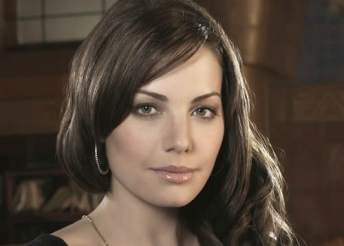“Who Can Save Us Now?” is edited by Owen King & John McNally and published by Simon & Schuster. The book is a fun collection of 22 stories that are all, at least loosely, tied into the superhero genre.
Which, in the beginning, is a place where this book seems to fail: While most of the stories are certainly superhero stories many of them are about people who only think that they are heroes, who are being discussed as if they are heroes when they truly are not, or who have only minor powers.
However, while this is disappointing at first, it soon becomes obvious that this is sort-of a trend, not just in this book but in the thinking about
superheroes in general.

A few of the stories, like Holliday’s “The Horses are Loose,” concerning a girl who imagines that she flies, and Haynes’ “The Lives of Ordinary Superheroes” in which we see a retired ‘superhero’ who was only super because the power of his own charismatic presence led others to repent their evil ways, are a mixture of a few recent sociological views.
No matter what your start in life, you may rise to any heights which you set your mind to, but at the same time there is no such thing as a person who is truly and spectacularly different from everyone else.
These stories seem to reinforce both of these ideals at the same time by showing us people who have become heroes in their hearts, but who, ultimately, are just as tied to the ground as everyone else, perhaps being worse off for their desire to be truly super.
Some of the stories do give us real superheroes, mostly as parodies of golden and silver age comic book stars, such as the first story in the book, Harrell’s “Girl Reporter,” which essentially tells the Superman story from the point of view of a disillusioned Lois Lane, tired of the hero’s lies about being alien, and Weller’s “The Quick Stop 5,” about a team very similar to the Fantastic 4, who must deal with the possibility of corporate sponsorship.
These stories take interesting, if cynical, looks at the lives and moralities of these golden superheroes, casting the original stories into a new ‘what-if’ light that makes for interesting reading for anyone who has made superhero comics and stories into a life-long hobby.
Still others tell the stories of the world as it sees the heroes from the outside, and the devastation that can be wrought when a ‘hero’ goes bad.
These are some of the most interesting stories in the collection, from Clarke’s mostly light-hearted “The Pentecostal Home for Flying Children,” in which a town deals with an entire generation of bastard flying children after a rogue superhero passes through town, to Snyder’s more emotional and serious “The Thirteenth Egg,” in which a soldier finds that he can turn himself into a nuclear bomb while dealing with the hardships of returning home from the front.
These ‘villain’ stories are the most poignant, and delve the most deeply into the human heart and its motives, showing a more realistic villain than we’re used to in the comic books: a regular guy, who could have been a hero, if only he had been given the chance, if only others had understood him.

The majority of the collection, however, is comprised of works that tell the stories of ‘mundane’ superheroes: those heroes who have powers, but who are not truly super. Some of the best of these are King’s “The Meerkat,” about a man who’s physiology is changed to that of a giant meerkat; Singleton’s “Oh Man – It’s Manna Man,” about a man who can control the actions of people he sees on live television broadcasts; Doolittle’s “Mr. Big Deal,” about a man who can stop others from using their own powers; and Weiner’s “League of Justice (Philadelphia Division),” about a woman who finds that dead people can speak with her through electronic devices.
All of these ‘mundane hero’ stories have some things in common. They each show us a world in which superheroes are real.
The characters mention the names and exploits of the most powerful superheroes, the ones the comics are written about, however we never meet them. Instead, we are introduced to a few people who, in such a world, must exist: the minor leaguers.
These heroes must not only deal with the crimes or villains that they have been tasked with, but also with the very human feelings of jealousy and inadequacy. As amazing as their own powers are, they know that they are not even close to the top of the totem pole, and the people they save, often do not even know them, or mistake them for someone else.
This, I think, is also the most important trend to take note of in this book. Gone are the stories about flawless heroes, and terrible villains. Gone is the stark dichotomy of the superhero stories.
Those characters are immature, and difficult to relate to. These stories tell tales that are more like the situations that real people would get into if they awoke one morning and found themselves suddenly laden with the burden and responsibility of a superpower. They have real emotions, and have difficulty establishing a true and correct path for themselves, without doubting very move along the way.
This is a trend, I think, which is also being represented in contemporary movies and comic books. Heroes must be real people, and if we are to relate to their stories, we must be able to see our own weaknesses and insecurities within them.
This collection does a wonderful job of displaying the modern superhero story, the way it should be,and the way it is headed. I strongly recommend this book to any fan of superhero stories or anyone who strives to understand and relate to the challenges inherent in the human drive to excel and be heroic.






